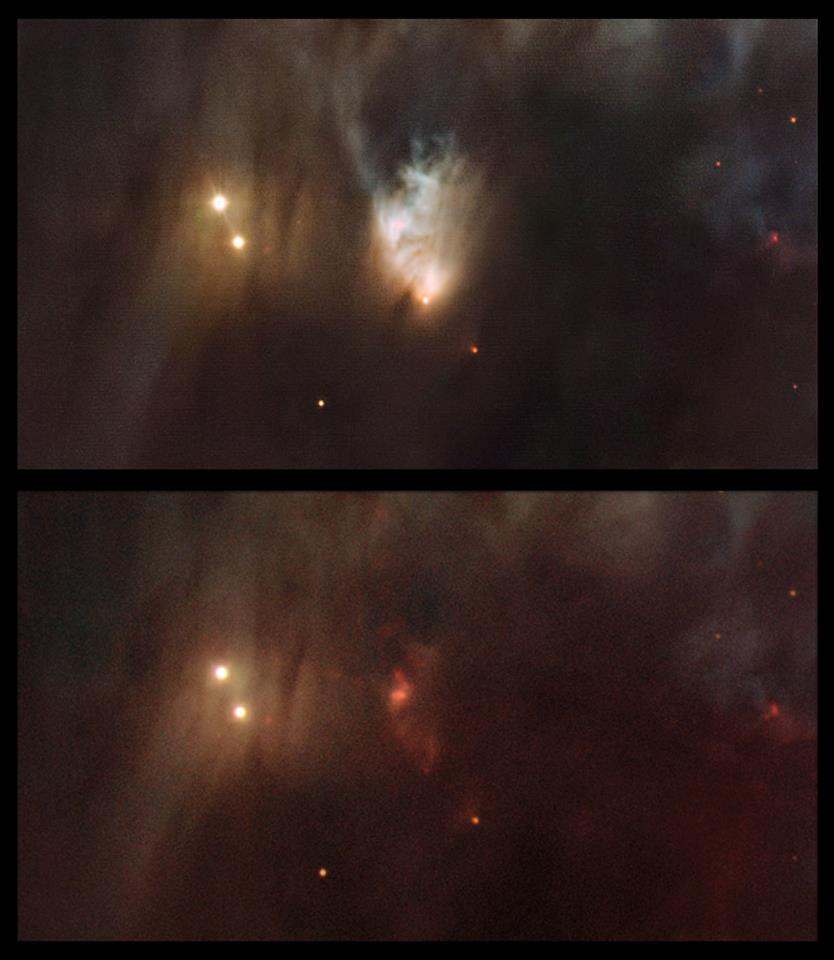

It’s interesting how much of a difference a few years makes in this stellar nursery, which lies some 1,600 light-years away from Earth. Messier 78 (also known as M78 or NGC 2068) is in a reflection nebula from the Orion Molecular Cloud Complex, in the constellation of Orion.
This is, by far, not one of the best images of this typically stunning region (which you can find a link to in the sources section after the article). However, it does clearly show the changes the area underwent over the course of the (almost) ten years separating the two observations.
In the bottom image, taken with the 4-metre Mayall telescope in Arizona back in 2004, you can see that the fan-shaped (or arrow-shaped) object is almost completely transparent. Conversely, it is quite prominent in the top photo, which is the newest of the bunch, taken in 2011.
This area is now known as McNeil’s nebula, after the amateur astronomer that made the initial discovery back in 2004. It’s actually a variable reflection nebula (increasing and decreasing in brightness over time) from M78 that surrounds a young, energetic proto-star. This star – named V1647 Orionis – completes one rotation each day, making it about 30 times faster than the rotation of the Sun!
Also seen in both images are two other bright stars; HD 38563A and HD 38563B, both of which power Messier 78 as a whole. There are many more stars that dwell here (an estimated 45 stars in all), but are much more difficult to spot since most are still in the early stages of stellar evolution (most are no more than 10 million years-old) and haven’t become hot enough to begin nuclear fusion in their cores.
See a larger version of this image here.